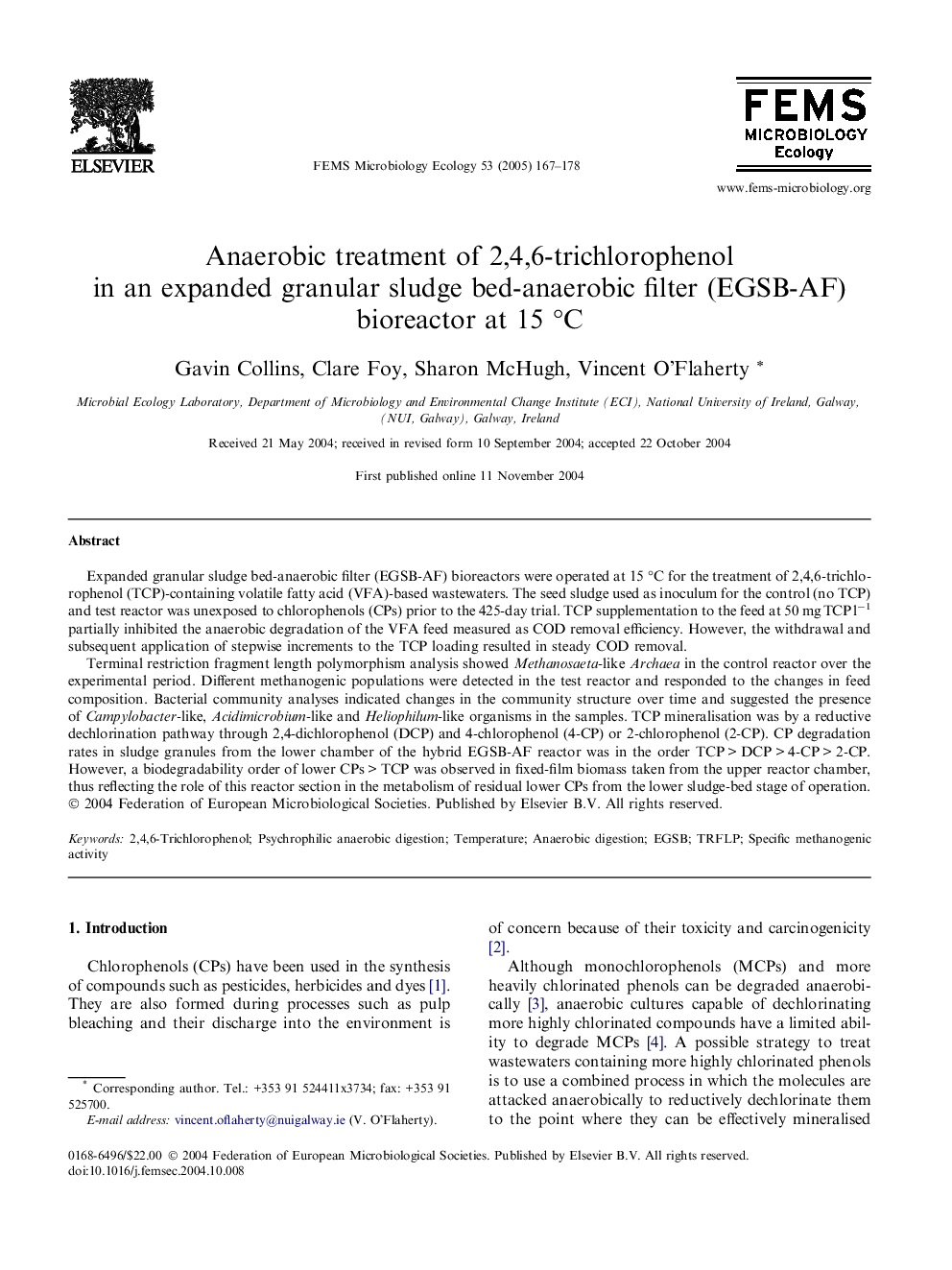| Article ID | Journal | Published Year | Pages | File Type |
|---|---|---|---|---|
| 9437719 | FEMS Microbiology Ecology | 2005 | 12 Pages |
Abstract
Terminal restriction fragment length polymorphism analysis showed Methanosaeta-like Archaea in the control reactor over the experimental period. Different methanogenic populations were detected in the test reactor and responded to the changes in feed composition. Bacterial community analyses indicated changes in the community structure over time and suggested the presence of Campylobacter-like, Acidimicrobium-like and Heliophilum-like organisms in the samples. TCP mineralisation was by a reductive dechlorination pathway through 2,4-dichlorophenol (DCP) and 4-chlorophenol (4-CP) or 2-chlorophenol (2-CP). CP degradation rates in sludge granules from the lower chamber of the hybrid EGSB-AF reactor was in the order TCP > DCP > 4-CP > 2-CP. However, a biodegradability order of lower CPs > TCP was observed in fixed-film biomass taken from the upper reactor chamber, thus reflecting the role of this reactor section in the metabolism of residual lower CPs from the lower sludge-bed stage of operation.
Keywords
Related Topics
Life Sciences
Environmental Science
Ecology
Authors
Gavin Collins, Clare Foy, Sharon McHugh, Vincent O'Flaherty,
